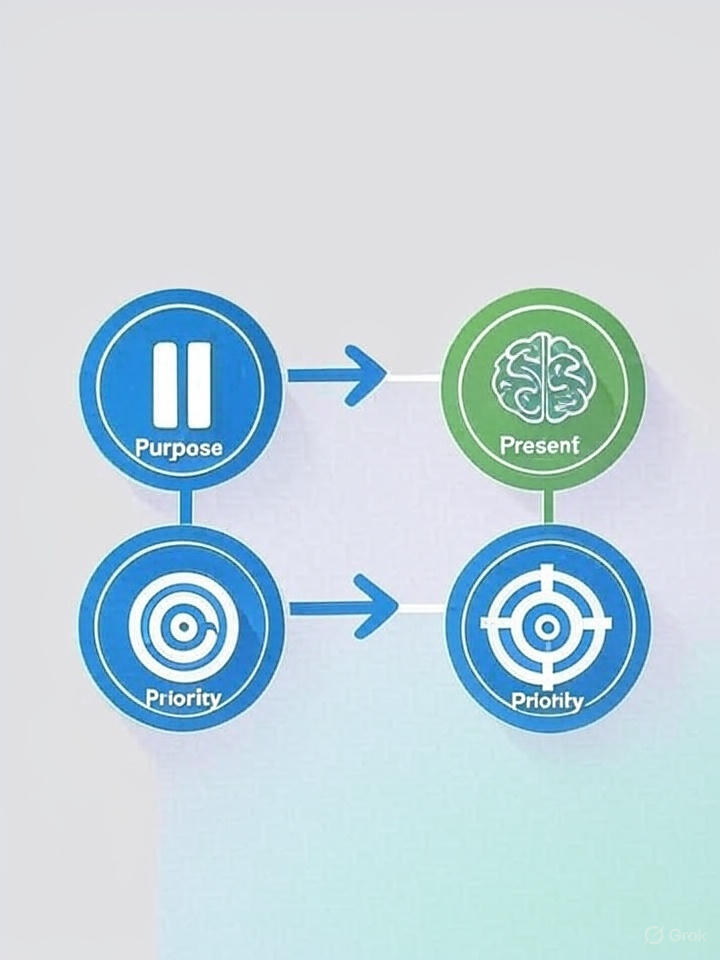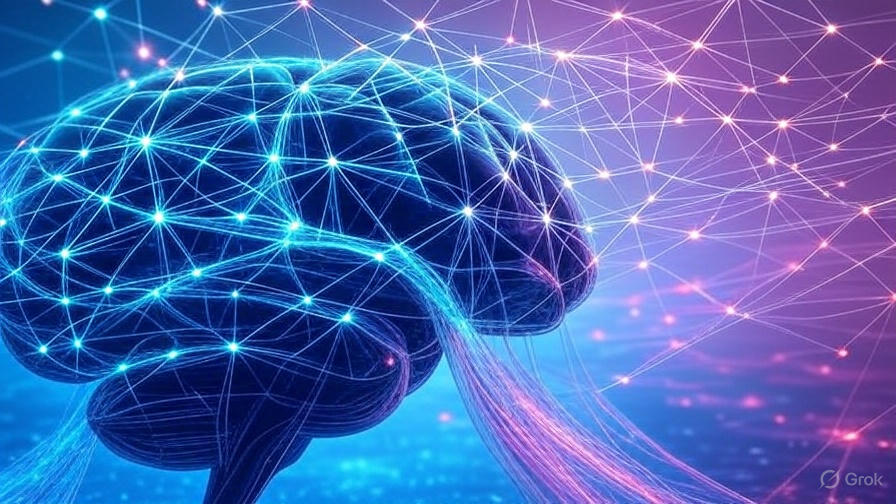Last Updated: July 2025 | Reading Time: 12 minutes
In today’s digital landscape, educators face an unprecedented challenge: teaching students who are constantly connected yet increasingly distracted. With 95% of teens having access to a smartphone according to the Pew Research Center, classroom tech mindfulness strategies have become essential tools for modern educators.
This comprehensive guide explores evidence-based approaches to cultivate mindful technology use in educational settings, offering practical solutions that transform digital distractions into opportunities for deeper learning and self-awareness.
What Are Classroom Tech Mindfulness Strategies?

Classroom tech mindfulness strategies are intentional practices that help students develop conscious awareness of their technology use while maintaining focus on educational objectives. These approaches combine traditional mindfulness principles with modern digital literacy, creating a balanced framework for healthy technology integration.
According to research published in the Journal of Educational Psychology, students who practice mindful technology use demonstrate improved attention spans, reduced anxiety, and enhanced academic performance. The key lies in teaching students how to engage with technology rather than simply restricting access.
Core Components of Tech Mindfulness
Intentional Engagement: Students learn to approach technology with purpose rather than habit. This involves pause-and-reflect moments before picking up devices, questioning the necessity of each digital interaction.
Present-Moment Awareness: Developing the ability to notice when attention drifts from academic tasks to digital distractions, coupled with gentle redirection strategies.
Digital Boundary Setting: Creating healthy limits around technology use that support rather than hinder learning objectives.
The Science Behind Digital Distraction in Classrooms
Research from Stanford University reveals that the average student checks their phone every 12 minutes during class time, with each interruption requiring up to 23 minutes to fully refocus on academic tasks. This constant switching creates what neuroscientist Dr. Adam Gazzaley calls “interference” – a cognitive bottleneck that significantly impacts learning efficiency.
The prefrontal cortex, responsible for executive functions like attention and decision-making, becomes overwhelmed when managing multiple digital inputs simultaneously. This phenomenon, known as “continuous partial attention,” leaves students feeling mentally exhausted while paradoxically craving more digital stimulation.
Neuroplasticity and Mindful Tech Use
The good news lies in neuroplasticity – our brain’s ability to rewire itself through repeated practice. When students consistently apply mindful technology strategies, they literally reshape their neural pathways to support sustained attention and conscious digital choices.
Studies published in Nature Neuroscience demonstrate that mindfulness practices increase grey matter density in areas associated with attention regulation, emotional processing, and self-awareness. These changes begin appearing after just eight weeks of consistent practice.
Evidence-Based Classroom Tech Mindfulness Strategies
1. The Digital Pause Protocol
This foundational strategy teaches students to pause before engaging with any digital device, asking three key questions:
- Purpose: Why am I reaching for this device?
- Present: What am I feeling or thinking right now?
- Priority: How does this align with my current learning goals?
Implementation Steps:
- Introduce the protocol during the first week of school
- Practice together as a class before transitions involving technology
- Create visual reminders posted near device storage areas
- Incorporate reflection journaling to track awareness growth
Research from Harvard Medical School shows that this simple pause-and-reflect practice reduces impulsive technology use by up to 40% within four weeks of consistent application.
2. Mindful Notification Management

Teaching students to consciously curate their digital environment empowers them to reduce involuntary distractions while maintaining necessary connectivity.
Practical Activities:
- Notification Audit: Students review and disable non-essential notifications
- Priority App Identification: Distinguishing between educational and entertainment applications
- Scheduled Check-ins: Designating specific times for social media or entertainment apps
A study published in the Computers & Education journal found that students who practiced mindful notification management improved their sustained attention by an average of 25% over one semester.
3. Single-Tasking Mastery
Contrary to popular belief, multitasking is a myth. The brain actually switches rapidly between tasks, creating inefficiency and stress. Single-tasking mastery teaches students to engage fully with one digital activity at a time.
Training Components:
- Focused Work Sessions: Using techniques like the Pomodoro Method adapted for educational settings
- Digital Decluttering: Closing unnecessary browser tabs and applications
- Mindful Transitions: Taking conscious breaths when switching between digital and analog activities
4. Embodied Technology Awareness
This strategy helps students reconnect with physical sensations while using technology, countering the dissociation often experienced during digital engagement.
Key Practices:
- Body Scans: Brief awareness of posture, breathing, and tension while using devices
- Ergonomic Mindfulness: Conscious attention to physical positioning and comfort
- Movement Breaks: Regular opportunities to stretch and move between digital activities
According to research from the Mayo Clinic, students who practice embodied technology awareness report 30% less digital eye strain and improved overall well-being.
5. Compassionate Self-Regulation
Rather than harsh self-criticism when digital distractions occur, this approach teaches students to respond with kindness and curiosity about their technology habits.
Implementation Framework:
- Non-Judgmental Awareness: Noticing digital distractions without self-criticism
- Gentle Redirection: Kind but firm return to educational tasks
- Learning Mindset: Viewing digital challenges as opportunities for growth
Practical Implementation in Different Educational Settings
Elementary Classrooms (K-5)
Young learners benefit from concrete, visual approaches to tech mindfulness:
Digital Feelings Check-ins: Using emotion charts to identify how different technologies make them feel Technology Time Timers: Visual countdown tools that make screen time tangible Device Sleep Rituals: Fun ceremonies for “putting devices to bed” during non-tech activities
Middle School Environments (6-8)
Adolescents need strategies that acknowledge their developing identity and social needs:
Peer Accountability Partners: Students work in pairs to support mindful technology choices Digital Citizenship Projects: Creating content that explores healthy technology relationships Mindful Social Media: Techniques for conscious engagement with social platforms
High School Settings (9-12)
Older students can engage with more sophisticated mindfulness concepts:
Metacognitive Reflection: Deep analysis of personal technology patterns and their impacts Digital Wellness Plans: Comprehensive strategies for managing technology across all life areas Mindful Research Skills: Applying mindfulness principles to information literacy
Overcoming Common Implementation Challenges
Resistance from Students
Some students may initially resist mindfulness approaches, viewing them as obstacles to their preferred technology use. Address this by:
- Emphasizing enhancement rather than restriction of technology experiences
- Sharing relevant research about cognitive benefits
- Allowing student input in creating classroom mindfulness guidelines
- Celebrating small wins and progress rather than perfection
Limited Technology Resources
Schools with fewer technological resources can still implement effective strategies:
- Focus on mindful use of existing devices rather than acquiring new technology
- Emphasize analog mindfulness practices that transfer to digital contexts
- Partner with community organizations for technology access
- Utilize free online resources and apps for mindfulness training
Time Constraints
Busy curricula can make additional practices seem overwhelming. Solutions include:
- Integrating mindfulness into existing technology use rather than adding separate sessions
- Using micro-practices that take less than five minutes
- Training students to self-regulate, reducing teacher management time
- Focusing on quality over quantity of mindfulness experiences
Measuring Success: Assessment and Evaluation
Quantitative Measures
Track improvements through concrete metrics:
Attention Span Duration: Measuring sustained focus during technology-integrated lessons Academic Performance: Monitoring grades and test scores in technology-heavy subjects Self-Report Surveys: Student assessments of their own technology awareness and control
Qualitative Indicators
Observe behavioral changes that indicate growing mindfulness:
Reduced Device-Reaching: Less unconscious reaching for phones or tablets Improved Transition Times: Smoother shifts between digital and analog activities Enhanced Peer Interactions: More eye contact and engagement during face-to-face conversations
Research from MIT’s Computer Science and Artificial Intelligence Laboratory suggests that comprehensive evaluation using both quantitative and qualitative measures provides the most accurate picture of mindfulness program effectiveness.
Integration with Existing Curricula
STEM Subjects
Technology mindfulness naturally aligns with STEM education:
Coding Mindfulness: Applying focused attention to programming tasks Digital Research Projects: Mindful evaluation of online sources and information Technology Ethics: Exploring the societal impacts of digital innovations
Language Arts
Literature and writing instruction offer rich opportunities for tech mindfulness:
Digital Storytelling: Creating multimedia narratives with intentional technology choices Online Research Skills: Mindful navigation of digital libraries and databases Social Media Literacy: Critical analysis of digital communication platforms
Social Studies
Historical and cultural contexts provide frameworks for technology mindfulness:
Digital Citizenship: Exploring rights and responsibilities in online communities Media Literacy: Critical evaluation of news sources and digital information Cultural Technology Studies: Examining how different societies approach technology use
For comprehensive strategies on implementing these approaches, explore our detailed guide on mindful tech use for teachers and digital distraction strategies for students.
Building School-Wide Tech Mindfulness Culture
Administrative Support
Successful implementation requires leadership commitment:
Policy Development: Creating guidelines that support rather than punish mindful technology exploration Professional Development: Providing ongoing training for all staff members Resource Allocation: Budgeting for mindfulness training and assessment tools
Family Engagement
Extending mindfulness beyond school walls amplifies impact:
Parent Education Workshops: Sharing strategies for home implementation Family Technology Agreements: Collaborative creation of household digital guidelines Community Partnerships: Connecting with local organizations focused on digital wellness
Peer Leadership
Students often learn best from other students:
Tech Mindfulness Ambassadors: Training student leaders to support peer learning Cross-Age Mentoring: Older students guiding younger ones in mindful practices Student-Led Workshops: Empowering learners to teach and reinforce concepts
Technology Tools That Support Mindfulness
Mindfulness Apps for Education
Several applications specifically support classroom mindfulness:
Headspace for Schools: Free mindfulness content designed for educational settings Calm for Education: Meditation and relaxation resources adapted for students Insight Timer: Extensive library of guided practices suitable for various ages
Browser Extensions and Digital Tools
Technology can support its own mindful use:
Freedom: Blocks distracting websites during designated study periods Forest: Gamifies focused work sessions through virtual tree growing RescueTime: Provides detailed reports on digital activity patterns
Assessment Platforms
Several tools help measure mindfulness program effectiveness:
Mindfulness in Schools Project: Provides validated assessment instruments Greater Good Science Center: Offers research-based evaluation tools Center for Mindfulness: Supplies comprehensive program assessment resources
Future Directions in Tech Mindfulness Education
Artificial Intelligence Integration
Emerging AI tools offer new possibilities for personalized mindfulness instruction:
Adaptive Learning Systems: AI that adjusts mindfulness practices based on individual student needs Predictive Analytics: Technology that identifies when students might benefit from mindfulness interventions Natural Language Processing: Tools that analyze student writing for indicators of digital stress or wellness
Virtual and Augmented Reality
Immersive technologies create new contexts for mindfulness practice:
VR Meditation Spaces: Virtual environments designed specifically for mindfulness practice AR Mindfulness Cues: Augmented reality prompts that encourage present-moment awareness Immersive Empathy Training: Virtual experiences that build understanding of technology’s social impacts
Biometric Integration
Wearable technology increasingly supports mindfulness awareness:
Heart Rate Variability Monitoring: Real-time feedback on stress and relaxation states Sleep Quality Tracking: Data that informs optimal technology use patterns Activity Recognition: Automatic detection of technology use patterns and mindfulness opportunities
Professional Development for Educators
Training Opportunities
Numerous organizations offer specialized training in educational mindfulness:
Mindfulness in Schools Project: Comprehensive certification programs for educators Center for Mindful Schools: Research-based training adapted for classroom application Greater Good Science Center: University-level courses in applied mindfulness education
Ongoing Support Networks
Connecting with other educators amplifies learning and sustainability:
Professional Learning Communities: Local groups focused on mindful education practices Online Forums: Digital spaces for sharing strategies and troubleshooting challenges Conference Networks: Annual gatherings that showcase cutting-edge research and practices
Conclusion: Creating Mindful Digital Citizens
Classroom tech mindfulness strategies represent more than temporary interventions—they lay the foundation for lifelong digital citizenship skills. As our world becomes increasingly connected, students who learn to approach technology with awareness, intention, and compassion will be better equipped to navigate an complex digital landscape.
The evidence is clear: students who develop mindful technology relationships demonstrate improved academic performance, enhanced emotional regulation, and stronger social connections. They become creators rather than consumers of digital content, critical thinkers rather than passive recipients of information.
Implementation requires patience, consistency, and commitment from entire school communities. Yet the investment pays dividends not only in immediate academic improvements but in preparing students for thoughtful engagement with whatever technological innovations await them in their futures.
By embracing classroom tech mindfulness strategies today, educators plant seeds for a more conscious, connected, and compassionate digital society tomorrow. The question is not whether technology will continue to evolve—it’s whether we will teach students to evolve mindfully alongside it.
As Wikipedia’s article on digital literacy notes, true digital competence extends beyond technical skills to include ethical awareness, critical thinking, and mindful engagement with digital tools and communities.
The journey toward classroom tech mindfulness begins with a single conscious breath, a moment of pause before reaching for a device, a commitment to presence in our increasingly distracted world. For educators ready to embark on this transformation, the tools, strategies, and evidence presented here provide a comprehensive roadmap toward more mindful, meaningful technology integration in education.
Ready to implement these strategies in your classroom? Download our free Technology Mindfulness Starter Kit and begin your journey toward more conscious digital learning today.





Pingback: Biblical AI Prophecy Commentary: Ancient Wisdom Meets Modern Technology - Snapspeak